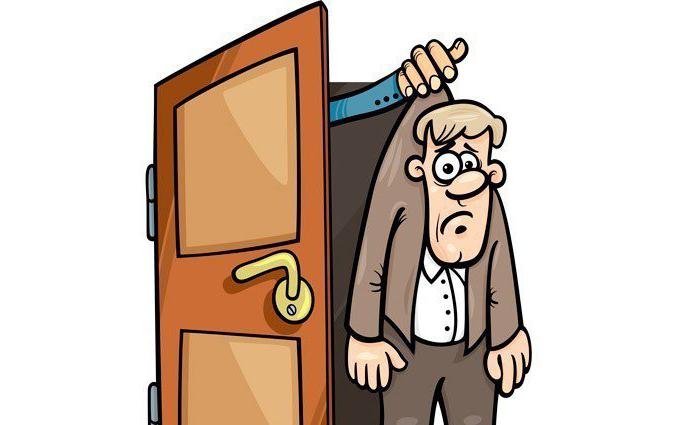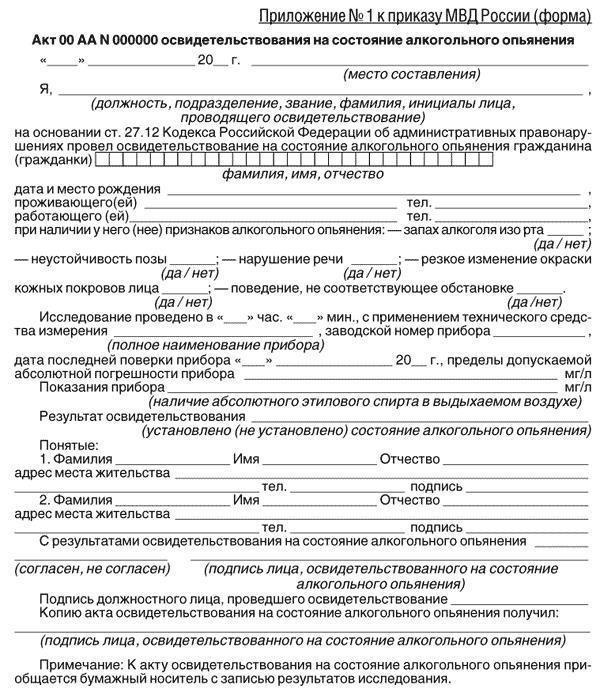The problem of alcoholism in Russia, unfortunately, does not lose its relevance today. The reasons for this negative phenomenon include the general availability of strong drinks, the inability of their reasonable consumption, and the special mentality of our people. Fans of drinks and not aware of the impending consequences often have to face difficulties in the social sphere. Especially when it comes to the performance of official or professional duties.
The offense act: why are they punished for drunkenness?
The Act on alcohol intoxication (a sample document will be presented below in the text of the article) is the first real problem that a drinker will have to face. When drafting a document in relation to an official at the workplace, the drunkard is threatened with dismissal or at least disciplinary action. Being driven while intoxicated by the law is also being prosecuted - it turns for the offender to a deprivation of a driver’s license, a huge monetary fine, and in some cases an administrative arrest.
When driving, a drunk driver loses his ability to react to the road adequately and immediately, which creates a danger to himself and other road users. A person who has all the main signs of intoxication is also not able to carry out his usual work, to control his actions and bear responsibility for them, and therefore deserves the use of appropriate educational measures in relation to himself.
Employee drunkenness protocol as a reason for dismissal
Even if a person has become a victim of biased accusations in his turn, the first thing that should be done to him is to familiarize himself with the procedure for legal relations arising between him and a higher person (a representative of a state body) in the event of being drunk at the workplace or driving a car.
The head of the institution has the right to draw up an act on the employee being intoxicated and dismiss the “negligent” employee if the perpetrator was discovered during the drinking of alcohol:
- at work;
- in the territory adjacent to the company;
- at the branches of the enterprise.
In what cases does the drawing up of an act not serve as a reason for dismissal?
For the execution of the act of being drunk, the time plays an important role. As a rule, the employee “drunk”, noticed outside the work shift, does not face dismissal, in most cases the case ends with a warning from the management. The act for the performance of duties in a drunken state also does not constitute, if:
The act for the performance of duties in a drunken state also does not constitute, if:
- employees of the enterprise carry out their activities overtime;
- the employee drank alcohol before working hours and was not allowed to work;
- the minor employee of the enterprise is drunk - the head has the right to dismiss the offender subject to obtaining permission from the state labor inspectorate;
- drunk employee - a pregnant woman, the mother of a child under the age of 3 or 6 years, the mother of a disabled person or raising a child in the status of a single mother.
At first glance, the situation is absolutely paradoxical, and instead of receiving legal punishment for violations, such people will be able to avoid dismissal even with regular drinking at the workplace.Citizens who do not belong to the above categories will have to answer for the misconduct to the fullest extent of the law.
The main signs of intoxication
As soon as the administration of the institution becomes aware of the violation by the employee, a protocol is drawn up that also contains signs of intoxication. For the act and bringing the perpetrator to justice they are of fundamental importance.  The obvious manifestations of human intoxication include:
The obvious manifestations of human intoxication include:
- alcohol breath;
- shakiness and instability of movements, poses, gait;
- changes in speech;
- facial redness;
- inappropriate behavior.
How to draw up a drunken act?
In the presence of all or several signs of alcohol intoxication (for the act most often focus on the presence of "fumes" during breathing and conversation drunk), the employee is sent for a medical examination of the fact of drunkenness. In addition, for registration of the protocol, it is equally important:
- Indication of the exact name of the document and organization;
- clarification of the time and place of the incident;
- intruder data
- information about witnesses, at least two;
- explanations of the violator or fixing the fact of refusal of explanations.
Workplace effects
To paint signs of intoxication for the act should be detailed, with all possible details. This is especially important when a drunken employee refuses to undergo a medical examination. In this case, the testimony of witnesses and a description of the signs of intoxication for the act will play a decisive role.
To begin the dismissal procedure, an order is issued, the basis for which should be a medical report. Moreover, the signs of alcohol intoxication for the act (the sample document has a standard form) and the consideration of the case by a special commission do not play a decisive role.
The medical report indicates the level of alcohol in the blood of the employee. If according to the results of the check it significantly exceeds the norm, the outcome of the case is unequivocal - dismissal with an appropriate entry in the work book.
How are drivers punished for drunk driving?
If the guilty person is threatened with dismissal for drunkenness at work, then the law provides for a more severe punishment for violators participating in road traffic. The Code of Administrative Offenses states that when driving while intoxicated, the traffic police will be forced to fine the driver for 30,000 rubles and deprive him of a driver’s license for up to 2 years. When committing a repeated misconduct, the amount of the monetary penalty increases to 50,000, and the term of deprivation of the right to drive - up to 3 years.
In addition, it is worth paying attention to the procedure for measuring the level of alcohol in the blood. In our country, the norm is considered to be 0.3 ppm. External signs of alcohol intoxication for an act executed by traffic police are the same manifestations described above. In their absence, law enforcement officers do not have the right to force them to undergo a survey.
Blood alcohol and signs of intoxication: what is the difference?
By the way, if the driver is confident in his innocence, but the inspector continues to insist on his accusations, the most correct decision would be to agree to an on-site examination.  The fact is that the only proof that a person is clearly in a state of intoxication can only be the excess of the normal level of ethyl alcohol in the blood. You need to pay attention to the following points:
The fact is that the only proof that a person is clearly in a state of intoxication can only be the excess of the normal level of ethyl alcohol in the blood. You need to pay attention to the following points:
- The smell of alcohol or the so-called “fume” among the people can remain for a day after drinking strong drinks. However, this does not always mean that a person is in a state of intoxication.
- When taking drugs containing alcohol, the driver can also smell foul of alcohol. If their reception is not forbidden to persons driving a car, there is nothing to worry about.
Alcohol Inspection: Expertise for Drivers
The traffic police officer has the right to draw up an act on the state of intoxication of the driver only after receiving the results of the on-site examination. The procedure is carried out in the following order:
- In the presence of witnesses, a person accused of driving while intoxicated is removed from the car.
- To record the results and record the research, a special technical device is used, the type and number of which is entered in the federal register of approved types of measuring instruments. Before the examination, the driver has the full right to require the inspector to provide permits for the device.
- After that, the traffic police officer demonstrates to the researched and understood the integrity of the meter’s brand and the readiness of the device for the procedure, introduces the examination procedure, regulated by the relevant regulatory act of the Ministry of Internal Affairs.
- The presence or absence of a critical blood alcohol content is determined based on the readings of the device that examined the exhaled air. The use of modern breathalyzers allows an error in the region of 0.1 ppm.
Features of bringing the violator to justice
Upon confirmation of the driver’s drunken state, the inspector draws up an inspection certificate, which is signed by all participants in the process. In case of disagreement of the guilty person with the results of the check, a corresponding entry is made in the document, and the offender himself is sent to undergo a mandatory medical examination. The conclusion of the examination, which took place within the walls of a specialized institution, is the main documentary evidence of signs of alcoholic intoxication of the driver and the basis for bringing him to legal liability.
Without waiting for the results of the relevant checks, the traffic police inspector, suspecting the driver of intoxication, has the right to order the evacuation of his car to the parking lot. It is not uncommon for law enforcement officials to indict a driver who drinks alcohol in a parked car. By the way, the driver can be called the person driving the vehicle, and not just inside it.
A citizen who has been dismissed from work or deprived of a driver’s license due to drunkenness has the right to appeal the decision in court. Case law practice knows many examples where those accused of alcoholic intoxication managed to prove their innocence, after which they were reinstated in the same position of the same workplace. In some cases, employees sought redress.
